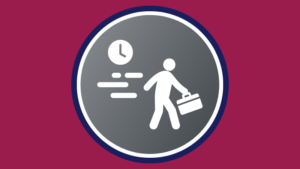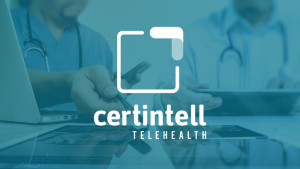Certintell’s blog series, “Industry Insights,” takes a look at what topics are buzzing with popularity in the mHealth and care management arena for Community Health Centers (CHCs), FQHCs and other community-based organizations. Here, you can explore how legislation might affect your workflows, what statistics might be preventing better patient outcomes, and tips for pushing past your biggest care barriers. Stay on top of what CHC news you should know below!
What is G0511 and why is it important?
Billing code G0511 is used in the context of Medicare billing for services related to chronic care with sites like designated Federally Qualified Health Centers (FQHCs). G0511 can also be billed for additional services including Behavioral Health Integration (BHI), Remote Physiological Monitoring (RPM), and Remote Therapeutic Monitoring (RTM). These services are aimed at improving the coordination of care and health outcomes for these patients.
Note – CMS has elaborated on the definition of a chronic condition for CCM. Examples of chronic conditions include:
- Alzheimer’s disease / dementia
- Chronic Kidney Disease
- Anemia
- Asthma
- Chronic Obstructive Pulmonary Disease
- Diabetes
- Hypertension
- Osteoporosis
- Chronic Pain & Fatigue
- Atrial Fibrillation
- Obesity Stroke
- Cataract
- Arthritis (osteoarthritis and rheumatoid)
- Depression
- Heart Failure
- Migraine/ Chronic Headache
Code G0511 specifically pertains to complex chronic care management services, which involve providing non-face-to-face care to patients that require ongoing management. This code is used to bill for the additional time and resources required to manage the care of these patients.
The importance of billing code G0511 lies in its role in enabling healthcare providers to receive reimbursement for the time and resources they invest in managing the care of Medicare patients with chronic conditions. By using this code correctly and documenting the services provided, healthcare providers can ensure that they are appropriately compensated for the valuable care they deliver to these patients. This, in turn, supports the sustainability of practices that specialize in managing chronic conditions and contributes to better patient outcomes.
What do you need to be successful?
There are several things that you need to be successful when it comes to starting an effective RPM program. This includes enrolling patients in the program, determining device logistics, and providing technical setup and support. Other duties include regular tracking and ongoing care, alerting workflows and assistance, and scheduling routine check-ins. You can read more about the “6 Steps to Starting an Effective Program” below:
The future of Remote Patient Monitoring (RPM) holds significant promise, driven by technological advancements and evolving healthcare needs. RPM is expected to benefit from the continued development of wearable devices, sensors, and remote monitoring technologies, which will enhance its capabilities for real-time data collection and analysis. These advancements will enable RPM to expand its applications beyond chronic disease management, encompassing preventive care, post-acute care, and aging-in-place initiatives.
Additionally, the integration of RPM with telehealth services is expected to become more seamless, allowing for comprehensive virtual care delivery that includes remote monitoring, virtual consultations, and interventions. As the volume of data generated by RPM grows, there will be a greater focus on leveraging data analytics and artificial intelligence (AI) to derive actionable insights for personalized patient care and treatment optimization. Regulatory bodies are also adapting to support the broader adoption of RPM, including many Medicaid plans, with changes in regulations and reimbursement policies aimed at recognizing its value in improving patient outcomes and reducing healthcare costs. Understanding where RPM is headed in the near future is vital for your success today.
How Certintell can help:
Implementing a successful and sustainable Remote Patient Monitoring (RPM) program can be challenging and time-consuming, but partnering with a company like Certintell can make it easier. Certintell offers modern and equitable solutions to keep patients connected to care, with health coaches and care managers working alongside your team to maximize your program’s potential. Our HIPAA-compliant and secure portal simplifies this process. Certintell also provides RPM training and processes for clinicians to align workflows and goals, ensuring that patients are not left behind.
Our Care Managers work with points of contact at health centers to assist with patient eligibility checks, device setup, usage education, and ongoing patient care and management.5 By partnering with Certintell, you can access the tools and support needed for successful RPM implementation, reducing stress for both clinicians and patients. Utilizing the G0511 code with Certintell’s support will lead to better health outcomes, increased patient and clinician satisfaction, with uncapped revenue potential and cost savings from improved care management.
Want to learn more about billing for code G0511 and RPM implementation? Contact us today to learn more!
Sources
https://www.foley.com/insights/publications/2023/11/top-5-rules-medicare-2024-rpm-rtm/
https://certintell.com/wp-content/uploads/2020/11/RPM-Workflow-Guide-v2.pdf
https://certintell.com/wp-content/uploads/2022/12/WHITEPAPER-RPM-2025-Beyond-1.pdf
https://certintell.com/wp-content/uploads/2022/04/SCHCCN-Case-Study.pdf



